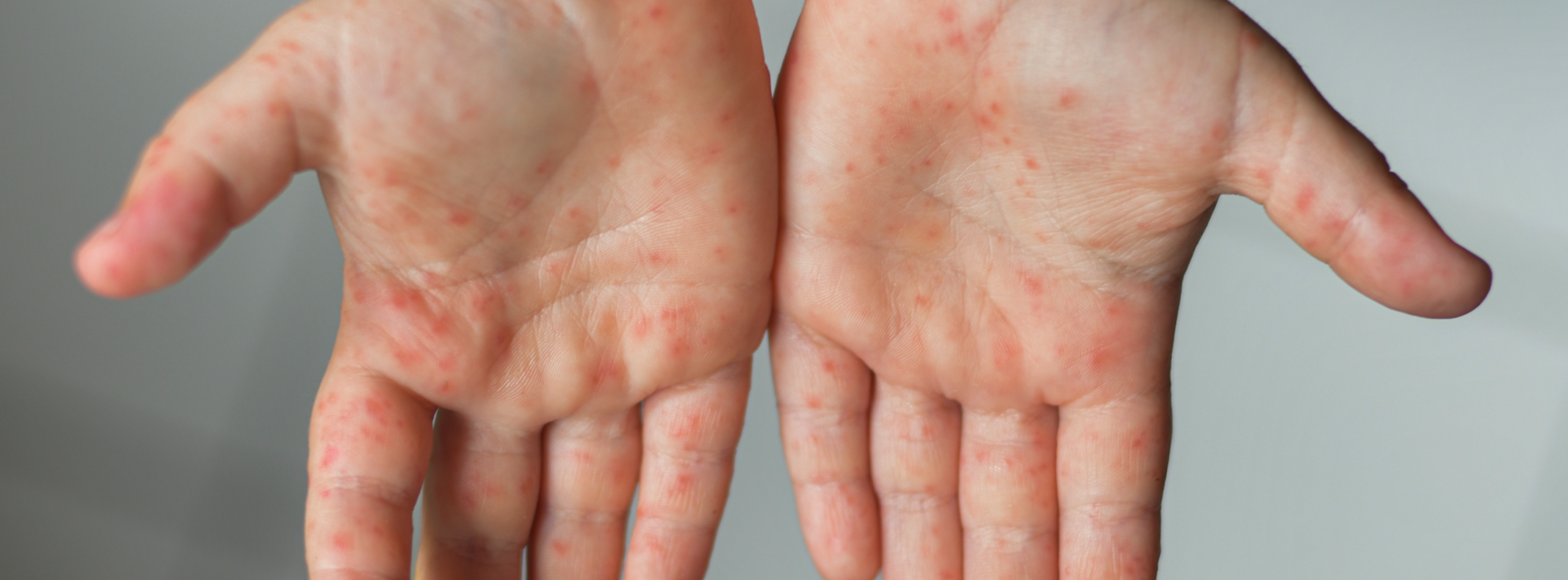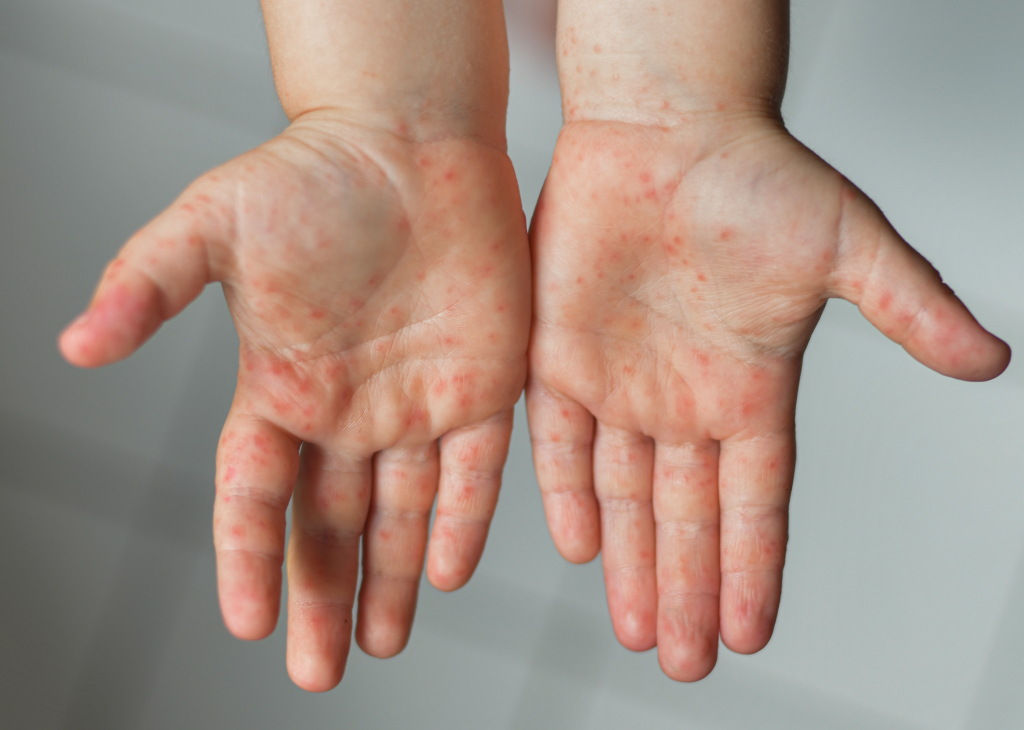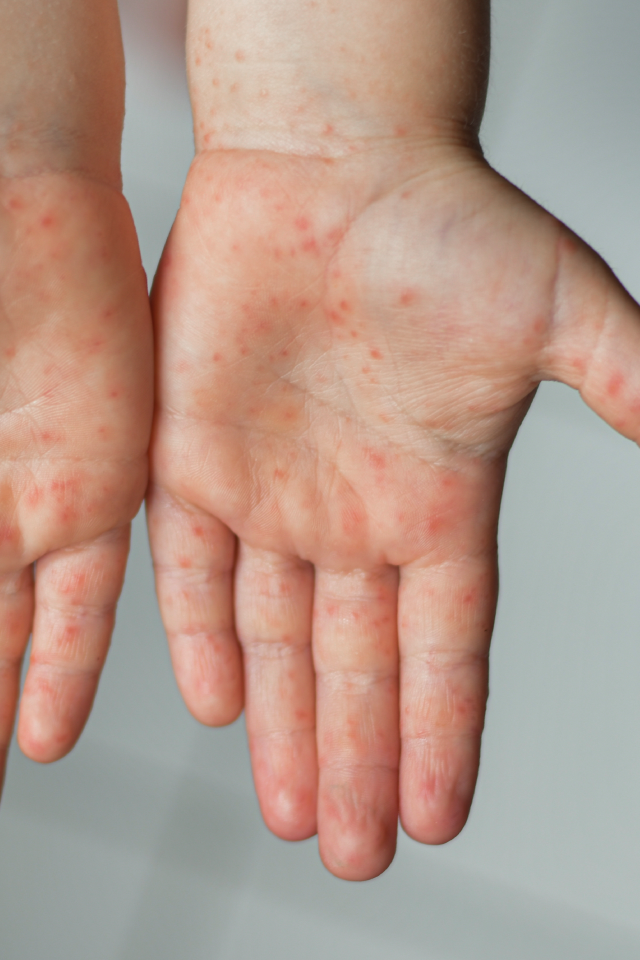Parents may have heard about the outbreak of ‘scarlet fever’ occurring in several schools. In addition to this illness, there are also ‘other common childhood diseases. Let’s get to know these frequently seen illnesses in young children’. Since there is currently no vaccine to prevent infection from ‘scarlet fever’, and without proper treatment it can lead to serious complications that may be dangerous for your child, let’s learn more about this disease and how to protect your little one.
Since there is currently no vaccine to prevent infection from scarlet fever, and without treatment it can lead to serious complications that may be dangerous for your child, let’s take a closer look at this disease and learn how to protect your little one.
Scarlet fever, or ‘Khai E-dam E-daeng’ in Thai, is an infectious disease caused by a type of bacteria called Group A Streptococcus, which affects the respiratory tract, particularly the throat and tonsils.
How is scarlet fever transmitted ?
Scarlet fever is transmitted by inhaling droplets from the saliva or mucus of an infected person. The infection can spread when someone is coughing or sneezing near others. It can also be transmitted through direct contact with an infected person’s hands, which may carry the bacteria, or through contact with contaminated objects such as cups, plates, bowls, or handkerchief.
Checking for symptoms of ‘scarlet fever’ in your little one
- High fever and chills
- Headache, fatigue, and muscle aches
- Sore throat, possibly with red spots on the roof of the mouth, swollen and red tonsils with pus. Sometimes, swollen lymph nodes on the sides of the neck can be felt.
- The tongue may have red spots resembling strawberries.
- Red rash around the neck, chest, and spreading to the body and limbs. The rash feels rough, like sandpaper when touched. The face may have red cheeks and a pale mouth, and there might be itching in the rash area. Eventually, peeling of the fingertips and toes may occur.
Treatment
Scarlet fever can be treated with antibiotics such as penicillin or amoxicillin for a total of 10 days. Even if your child’s symptoms improve, it is important to continue the full course of medication to prevent any potential complications.
Complications that require immediate medical attention for your child!
The major complications of scarlet fever include:
- Rheumatic fever and acute glomerulonephritis (kidney inflammation), which often occur 1 to 4 weeks after a throat or tonsil infection if left untreated or if the full course of antibiotics is not completed.
- Middle ear infection (otitis media)
- Sinusitis (sinus infection)
How to protect your little one from scarlet fever
Since there is currently no vaccine to prevent scarlet fever, infection can be avoided by following these preventive measures:
- Keep your child healthy by providing a well-balanced diet with all five food groups and ensuring they get enough rest.
- Do not share personal items with infected individuals, especially items like drinking glasses or handkerchiefs.
- Avoid close contact between your child and infected individuals. If contact is unavoidable, ensure your child wears a mask and washes their hands before and after any interaction or contact with the patient’s belongings.
- If your child becomes infected, they should stay home from school or be kept away from others until at least 24 hours after starting antibiotics to prevent spreading the infection.
A heartfelt thank for useful information from Ms. Piyarat ‘Ann’ Lertbannaphong, a specialized pediatrician.
Crated At 06/05/2025
















